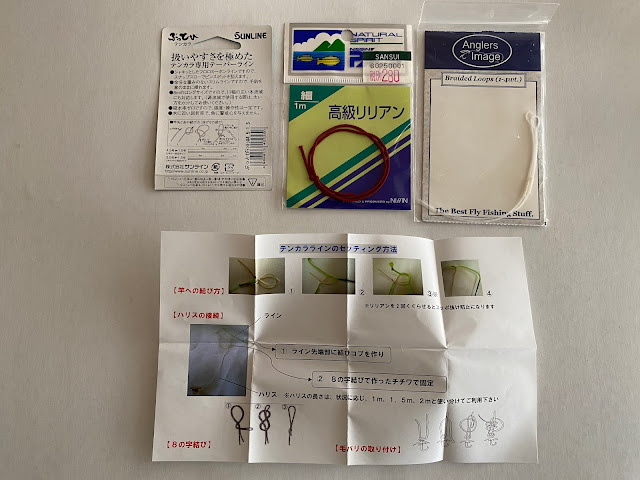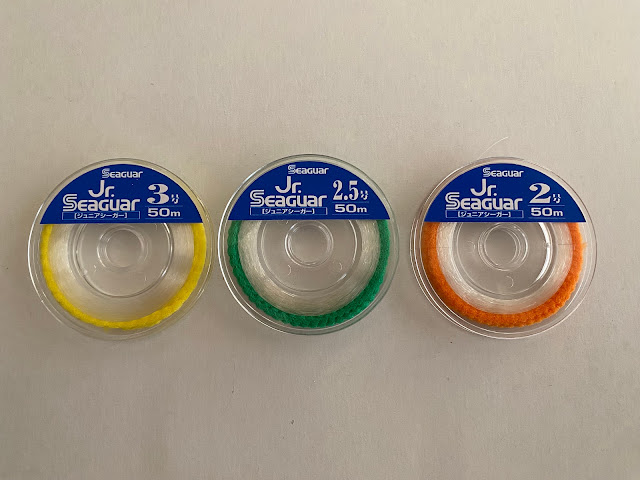Tippet rings are an attribute to a tenkara line system that you can use to maximize your technique. They are not a choice for many anglers because tippet rings are not simple, easy or stealthy. People say they distract fish, weigh and impart drape and drag on the system and other negative things like it’s just one more thing to add in. I believe they do far more for my system of catching fish than the alternative such as a stopper knot at the end of the mainline.
I’ve been using tippet rings regularly when I was fly fishing long before 2009. I studied the why and why not, analyzing their performance all before my first day of tenkara. Initially, I didn’t use them on my first few tenkara lines. I wanted to learn tenkara, I thought it was important to copy people in the know about it. I didn’t want to go against convention and no tenkara angler used them at the time. In American social media tenkara circles, there were so many that said that their use was not tenkara. I didn’t know any better then but now?
When you know better, you do better.
I knew better than to buckle to peer pressure considering my own experience of how well they worked only after researching what tenkara was all about. Early on in the timeline, there were very strong opinions outside of Japan about what constituted tenkara.
I began to make friends with many Japanese tenkara experts, I asked a lot of questions about the equipment and techniques, what it exactly was. I bought all kinds of Japanese books about tenkara and keiryu books that had sections on tenkara. Old and new books that described the equipment. More importantly I bought a lot of magazines that chronicled tenkara over the decades. I also collected videos, none of which had one single thing about tippet rings.
I kept using them and I brought my lines to Japan where many anglers examined my equipment and cast my line system. Always my rod and line system was meet with positive reactions.
From all my research and fishing in Japan, I learned that the Japanese masters often borrowed from fly fishing. They wore vests, used American made vices, French fly boxes, they crafted a kit out of what worked. Many experts made their equipment and some used bait rods and hooks for their tenkara gear.
The beginnings of tenkara outside of Japan were in short a singular but narrow scope of tenkara. There were others that researched tenkara and added to the body of knowledge and I’m grateful yet I kept my focus on where tenkara came from and did not succumb to peer pressure.
Tippet rings are an attribute to maintaining the line, they give the tippet knot a uniform surface to break allowing you to feel that breaking point easier. Lines seem complete with a tippet ring and their performance supports this.
Many experts used cut fly lines, some used beaded flys, every expert borrowed technology from other forms of fishing but what I found running through all the experts craft was that they often created their own gear.
I create my custom lines terminated with tippet rings.
Tippet rings work on many types of lines, fluorocarbon, nylon, braided, tapered mono, I use them on all of the different types of lines I use.
If you are going to use tippet rings, there are a couple of things that you should do to make them work at maximum performance.
#1. Use the best quality tippet rings you can find. That means using a tippet ring that are formed and not soldered or welded. I use Stonfo. There is no edges on the ring to cut your tippet.
#2. Use a needle (I use a sewing machine needle) to set the knot uniformly and to test the knot strength before applying knot glue. You are after the fish of a lifetime? Don't skip this step.
#3. Use a knot glue to coat the hook and additionally lock it. I use Loon Knot Sense and a Loon UV light for catalyzing the knot glue.
I regularly catch large fish using lines that I construct terminated with a tippet ring. I have yet to have a knot let go or a tippet ring fail. I protect my rods with premium tippet and the tippet ring gives the tippet attachment knot a uniform place to hold its strength. I depend on my tippet to break at the tippet ring if I get stuck or if I am on a fish that is foul hooked in swift current or a fish that is just too strong for my light tippets on tiny flys in heavy current.
Tenkara experts in Japan create their kit often borrowing from different disciplines such as fly and keiryu fishing. Creating your own tenkara kit, your equipment and techniques is fun.
The below reasons are why I use tippet rings.
Pros1. They maintain the integrity of your line length. The metal tippet ring does not wear out.
2. The tippet ring gives the tippet knot a uniform surface to grip on to and break.
3. A tippet ring will give your breaking strength a more uniform feel.
4. Ease of use on stream.
Cons1. Additional cost: More money for the rings plus Knot Sense glue and a UV light.
2. Extra step in line building at home.
I have cast lines with and without a tippet ring, there is no difference in drape or casting feel. As far as I can tell, the ring does not distract fish from the fly.
Take a look at the link below that further details the kit I use to rig my tenkara lines.
Line Rigging and Rod Repair Kit
Stonfo Tippet Rings
Creating Custom Tenkara Lines

 |
| See the seam/weld, it has an edge, do not use this type of ring |
Below are a few different types of line that I have used tippet rings with.




























































